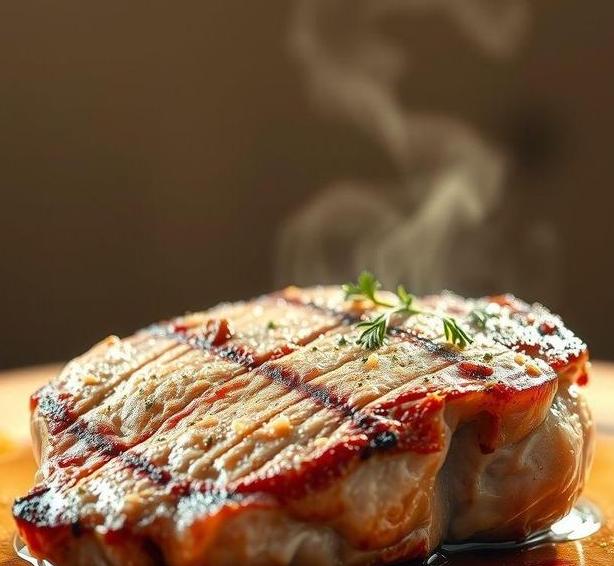Pork is one of the most widely consumed meats across the world. It’s versatile, delicious, and can be prepared in an endless variety of ways. Whether you’re cooking a tender roast, whipping up some stir-fried pork, or preparing the classic bacon, pork brings a distinct flavor that few other meats can match. But just like any other perishable food, pork is subject to spoilage if not properly handled or stored. So, how do you know when your pork is still safe to eat or when it’s gone bad?
Understanding the shelf life and signs of spoilage in pork meat is crucial for both food safety and ensuring that you enjoy the best-tasting dishes. In this detailed guide, we’ll break down everything you need to know about pork meat, including how long it lasts, how to store it, and how to identify when it’s time to say goodbye to that pork chop or pork belly. Let’s dive in!
Can Pork Meat Go Bad?
Yes, like all types of meat, pork can definitely go bad, and it can happen faster than you might expect if you don’t store it properly. Spoiled pork can lead to foodborne illnesses, which can cause a range of symptoms from mild stomach upset to more serious health issues. The bacteria responsible for spoilage, like Salmonella, E. coli, and Listeria, can grow on pork when it’s exposed to the wrong temperature or stored for too long.
To avoid any risk, it’s essential to understand how long pork can stay good under various storage conditions. And it’s not just about keeping an eye on the calendar – the physical state of the meat is just as important. Even if it’s within the time frame, factors like temperature and moisture can cause pork to spoil more quickly than expected.
So, how can you avoid the risk? First, knowing the different factors that contribute to pork spoilage is the key to extending its shelf life. The next section will provide a closer look at that.
Shelf Life For Pork Meat

The shelf life of pork meat varies depending on whether it is fresh, cooked, or preserved in some way. Here’s a breakdown of how long you can expect different cuts of pork to last:
Raw Pork
- Refrigerated: Raw pork, when stored at the right temperature (below 40°F or 4°C), can last up to 3-5 days.
- Frozen: If you freeze raw pork, it can last 6 months or longer, but for optimal quality, aim to use it within 4-6 months. Freezing doesn’t kill bacteria, but it does slow down their growth significantly.
Cooked Pork
- Refrigerated: Cooked pork can last about 3-4 days in the refrigerator. However, be sure to store it in an airtight container or tightly wrapped to maintain its freshness.
- Frozen: If you’ve got leftovers, cooked pork can last 2-3 months in the freezer. Again, it’s best consumed within this time frame to preserve texture and flavor.
Cured Or Processed Pork (e.g., Bacon, Ham, Sausage)
- Refrigerated: Unopened packages of processed pork like bacon, ham, or sausages usually last about 1-2 weeks in the fridge. Once opened, they may last around 5-7 days.
- Frozen: These items freeze well, typically lasting 1-2 months in the freezer before the quality begins to degrade.
Common Signs Of Spoilage
When it comes to meat, it’s not always obvious that it’s gone bad, especially if it looks fine on the surface. Here are some common signs to look out for:
Off-Smell
- What to look for: One of the most apparent signs that pork has gone bad is a sour, rancid, or otherwise ’off’ smell. Fresh pork should have a mild, clean scent. If it smells like ammonia or has a strong, unpleasant odor, it’s definitely spoiled.
Discoloration
- What to look for: Fresh pork is usually pinkish to light red. If you notice that the meat has turned a grayish-brown or dull color, it’s likely beginning to spoil. While some discoloration can occur due to exposure to oxygen (especially on the surface), it shouldn’t be widespread.
Slimy Or Sticky Texture
- What to look for: If the pork feels slimy or sticky to the touch, it’s a sign of bacterial growth. Fresh pork should feel firm and moist but not slick or gooey.
Mold Growth
- What to look for: If you see any mold on the pork, that’s a clear sign of spoilage. Mold can develop on pork when it’s left out at room temperature for too long or stored improperly in the fridge.
Changes In Texture
- What to look for: As pork begins to spoil, its texture may become mushy or soft in places. Fresh pork should have a firm, slightly elastic texture.
How To Store Pork Meat?

Proper storage is crucial for extending the shelf life of pork and ensuring that it remains safe to eat. Here are some essential tips on how to store pork meat effectively:
Refrigeration
- Always store raw pork in the coldest part of your refrigerator, usually near the back or bottom. Ideally, your fridge should be set to 40°F (4°C) or lower.
- Wrap the meat tightly in plastic wrap, aluminum foil, or butcher paper. Alternatively, place it in an airtight container to avoid exposure to air and moisture.
Freezing
- If you’re not planning to cook pork within a few days, freezing it is your best bet. Wrap the meat in heavy-duty freezer paper, plastic wrap, or a vacuum-seal bag to prevent freezer burn.
- For best results, freeze pork on the day of purchase or within a day or two after bringing it home.
Leftover Cooked Pork
- Store any leftover cooked pork in an airtight container to prevent moisture loss and contamination from other foods in the fridge.
- Make sure to refrigerate cooked pork within 2 hours of cooking to prevent bacterial growth.
Cured Or Processed Pork
- Bacon, ham, and sausages should be kept in their original packaging until you’re ready to use them. Once opened, store them tightly wrapped in plastic or a resealable bag.
Preventing Cross-Contamination
- Keep raw pork separate from other foods in the fridge. Use different cutting boards, utensils, and surfaces for pork to avoid cross-contamination.
Expert Tips
To make sure you’re always handling your pork properly, here are some expert tips from chefs and food safety professionals:
- Always Check the Date: Even if you’ve bought the pork recently, always check the sell-by or use-by date. It’s not a guarantee the meat is fresh, but it helps to give a general timeframe.
- Don’t Thaw at Room Temperature: Never leave frozen pork out at room temperature to thaw. The best method is to thaw it in the fridge overnight or under cold running water for faster thawing.
- Portion it Right: If you’ve bought a large cut of pork but don’t plan to use it all at once, portion it out before freezing. That way, you won’t have to thaw the entire piece when you only need a small amount.
- Avoid Refreezing: Once pork has been thawed, try not to refreeze it unless it has been cooked. Freezing and thawing multiple times can degrade the texture and quality of the meat.
FAQs
Can Pork Meat Go Bad If Left Out At Room Temperature?
Yes, pork meat can go bad if left out at room temperature for more than 2 hours. Bacteria can multiply rapidly in this time frame, making the meat unsafe to eat.
How Long Can Pork Meat Last In The Refrigerator?
Raw pork meat can last for 3-5 days in the refrigerator when stored properly at or below 40°F (4°C). Cooked pork meat lasts about 3-4 days.
Can Pork Meat Go Bad In The Freezer?
Pork meat can last indefinitely in the freezer, but for the best quality, it is recommended to consume it within 4-6 months. After this period, it may suffer from freezer burn and a decline in taste and texture.
What Are The Signs That Pork Meat Has Gone Bad?
Signs that pork meat has gone bad include a sour or off smell, a slimy texture, discoloration, or a change in color (such as turning gray or green). If the meat feels sticky or tacky to the touch, it’s best to discard it.
Can Pork Meat Go Bad After Cooking?
Yes, cooked pork meat can go bad if left out at room temperature for more than 2 hours. In the refrigerator, it can last 3-4 days, and if frozen, it can stay safe for 2-3 months.
How Can I Prevent Pork Meat From Going Bad?
To prevent pork meat from going bad, store it in the refrigerator or freezer immediately after purchase. Keep it sealed in airtight packaging and ensure the refrigerator is at the correct temperature (below 40°F or 4°C).
Is It Safe To Eat Pork That Has Been Frozen For A Long Time?
While frozen pork can remain safe indefinitely, the quality of the meat may deteriorate over time, especially after 6 months. It may become dry or tough when cooked, but it won’t necessarily pose a food safety risk if kept at a consistent freezing temperature.
What Should I Do If I Suspect My Pork Meat Has Gone Bad?
If you suspect pork meat has gone bad, it’s best to discard it. Eating spoiled pork can lead to foodborne illnesses, which can cause symptoms like nausea, vomiting, or diarrhea.
Can Pork Meat Go Bad If It’s Been Vacuum-sealed?
Vacuum-sealing can extend the shelf life of pork meat by limiting exposure to air and reducing bacterial growth. However, it can still go bad if not stored at the right temperature or if kept for too long. Always check for signs of spoilage before use.
Can I Tell If Pork Meat Has Gone Bad Just By Its Appearance?
Appearance can give you some clues, such as discoloration or mold, but the smell and texture are often better indicators. If the pork meat has a sour, rancid odor or feels slimy, it has likely gone bad and should not be eaten.